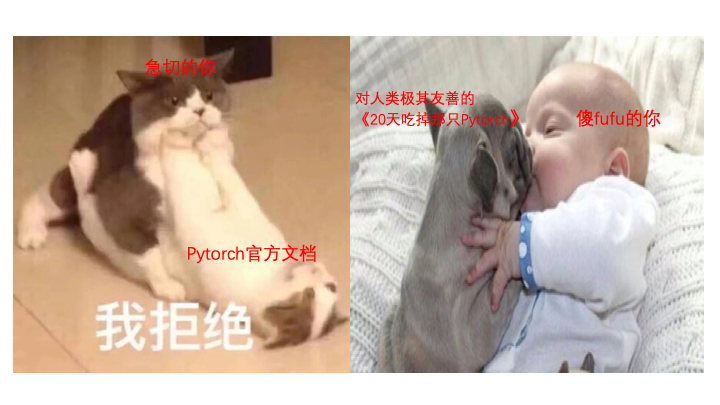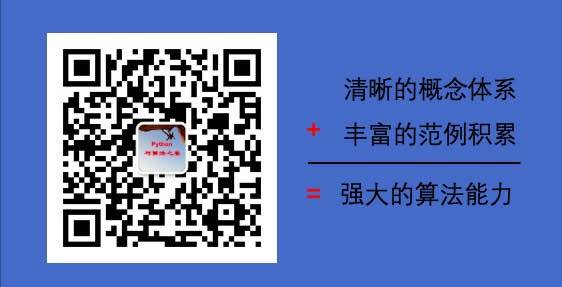Let me start with the conclusion:
If you are an engineer, you should choose TensorFlow2 first.
If you are a student or researcher, Pytorch should be preferred.
**If you have enough time, it is best to learn and master TensorFlow2 and Pytorch. **
The reasons are as follows:
*1, **The most important thing in the industry is model landing. At present, most domestic Internet companies only support the online deployment of TensorFlow models, not Pytorch. ** And the industry pays more attention to the high availability of models. Many times, mature model architectures are used, and the need for debugging is not large.
*2, **The most important thing for researchers is to publish articles quickly iteratively, and they need to try some newer model architectures. Pytorch has some advantages over TensorFlow2 in terms of ease of use and is more convenient for debugging. ** And since 2019, it has occupied more than half of the academic world, and there are more corresponding latest research results that can be found.
*3, TensorFlow2 and Pytorch actually have very similar overall styles. After learning one of them, it will be easier to learn the other. If you master both frameworks, you can refer to more open source model cases, and you can easily switch between the two frameworks.
TensorFlow mirroring tutorial for this book:
🍊《30 TensorFlow2》:https://github.com/lyhue1991/eat_tensorflow2_in_30_days
本书假定读者有一定的机器学习和深度学习基础,使用过Keras或TensorFlow或Pytorch搭建训练过简单的模型。
对于没有任何机器学习和深度学习基础的同学,建议在学习本书时同步参考阅读《Python深度学习》一书的第一部分"深度学习基础"内容。
《Python深度学习》这本书是Keras之父Francois Chollet所著,该书假定读者无任何机器学习知识,以Keras为工具,
使用丰富的范例示范深度学习的最佳实践,该书通俗易懂,全书没有一个数学公式,注重培养读者的深度学习直觉。。
《Python深度学习》一书的第一部分的4个章节内容如下,预计读者可以在20小时之内学完。
-
1,什么是深度学习
-
2,神经网络的数学基础
-
3,神经网络入门
-
4,机器学习基础
本书是一本对人类用户极其友善的Pytorch入门工具书,Don't let me think是本书的最高追求。
本书主要是在参考Pytorch官方文档和函数doc文档基础上整理写成的。
尽管Pytorch官方文档已经相当简明清晰,但本书在篇章结构和范例选取上做了大量的优化,在用户友好度方面更胜一筹。
本书按照内容难易程度、读者检索习惯和Pytorch自身的层次结构设计内容,循序渐进,层次清晰,方便按照功能查找相应范例。
本书在范例设计上尽可能简约化和结构化,增强范例易读性和通用性,大部分代码片段在实践中可即取即用。
如果说通过学习Pytorch官方文档掌握Pytorch的难度大概是5,那么通过本书学习掌握Pytorch的难度应该大概是2.
仅以下图对比Pytorch官方文档与本书《20天吃掉那只Pytorch》的差异。
1,学习计划
本书是作者利用工作之余大概3个月写成的,大部分读者应该在20天可以完全学会。
预计每天花费的学习时间在30分钟到2个小时之间。
当然,本书也非常适合作为Pytorch的工具手册在工程落地时作为范例库参考。
点击学习内容蓝色标题即可进入该章节。
| 日期 | 学习内容 | 内容难度 | 预计学习时间 | 更新状态 |
|---|---|---|---|---|
| 一、Pytorch的建模流程 | ⭐️ | 0hour | ✅ | |
| day1 | 1-1,结构化数据建模流程范例 | ⭐️⭐️⭐️ | 1hour | ✅ |
| day2 | 1-2,图片数据建模流程范例 | ⭐️⭐️⭐️⭐️ | 2hour | ✅ |
| day3 | 1-3,文本数据建模流程范例 | ⭐️⭐️⭐️⭐️⭐️ | 2hour | ✅ |
| day4 | 1-4,时间序列数据建模流程范例 | ⭐️⭐️⭐️⭐️⭐️ | 2hour | ✅ |
| 二、Pytorch的核心概念 | ⭐️ | 0hour | ✅ | |
| day5 | 2-1,张量数据结构 | ⭐️⭐️⭐️⭐️ | 1hour | ✅ |
| day6 | 2-2,自动微分机制 | ⭐️⭐️⭐️ | 1hour | ✅ |
| day7 | 2-3,动态计算图 | ⭐️⭐️⭐️⭐️⭐️ | 2hour | ✅ |
| 三、Pytorch的层次结构 | ⭐️ | 0hour | ✅ | |
| day8 | 3-1,低阶API示范 | ⭐️⭐️⭐️⭐️ | 1hour | ✅ |
| day9 | 3-2,中阶API示范 | ⭐️⭐️⭐️ | 1hour | ✅ |
| day10 | 3-3,高阶API示范 | ⭐️⭐️⭐️ | 1hour | ✅ |
| 四、Pytorch的低阶API | ⭐️ | 0hour | ✅ | |
| day11 | 4-1,张量的结构操作 | ⭐️⭐️⭐️⭐️⭐️ | 2hour | ✅ |
| day12 | 4-2,张量的数学运算 | ⭐️⭐️⭐️⭐️ | 1hour | ✅ |
| day13 | 4-3,nn.functional和nn.Module | ⭐️⭐️⭐️⭐️ | 1hour | ✅ |
| 五、Pytorch的中阶API | ⭐️ | 0hour | ✅ | |
| day14 | 5-1,Dataset和DataLoader | ⭐️⭐️⭐️⭐️⭐️ | 2hour | ✅ |
| day15 | 5-2,模型层 | ⭐️⭐️⭐️ | 1hour | ✅ |
| day16 | 5-3,损失函数 | ⭐️⭐️⭐️ | 1hour | ✅ |
| day17 | 5-4,TensorBoard可视化 | ⭐️⭐️⭐️ | 1hour | ✅ |
| 六、Pytorch的高阶API | ⭐️ | 0hour | ✅ | |
| day18 | 6-1,构建模型的3种方法 | ⭐️⭐️⭐️⭐️ | 1hour | ✅ |
| day19 | 6-2,训练模型的3种方法 | ⭐️⭐️⭐️⭐️ | 1hour | ✅ |
| day20 | 6-3,使用GPU训练模型 | ⭐️⭐️⭐️⭐️ | 1hour | ✅ |
2,学习环境
本书全部源码在jupyter中编写测试通过,建议通过git克隆到本地,并在jupyter中交互式运行学习。
为了直接能够在jupyter中打开markdown文件,建议安装jupytext,将markdown转换成ipynb文件。
#克隆本书源码到本地,使用码云镜像仓库国内下载速度更快
#!git clone https://gitee.com/Python_Ai_Road/eat_pytorch_in_20_days
#建议在jupyter notebook 上安装jupytext,以便能够将本书各章节markdown文件视作ipynb文件运行
#!pip install -i https://pypi.tuna.tsinghua.edu.cn/simple -U jupytext
#建议在jupyter notebook 上安装最新版本pytorch 测试本书中的代码
#!pip install -i https://pypi.tuna.tsinghua.edu.cn/simple -U torch torchvision torchtext torchkeras import torch
from torch import nn
print("torch version:", torch.__version__)
a = torch.tensor([[2,1]])
b = torch.tensor([[-1,2]])
c = a@b.t()
print("[[2,1]]@[[-1],[2]] =", c.item())torch version: 1.5.0
[[2,1]]@[[-1],[2]] = 0
如果本书对你有所帮助,想鼓励一下作者,记得给本项目加一颗星星star⭐️,并分享给你的朋友们喔😊!
如果对本书内容理解上有需要进一步和作者交流的地方,欢迎在公众号"Python与算法之美"下留言。作者时间和精力有限,会酌情予以回复。
也可以在公众号后台回复关键字:加群,加入读者交流群和大家讨论。

